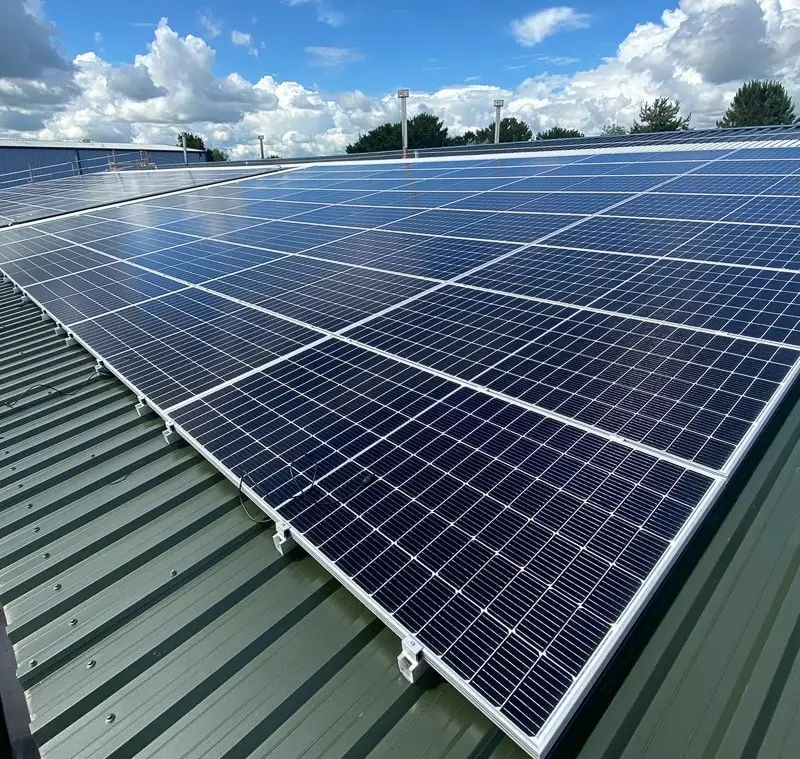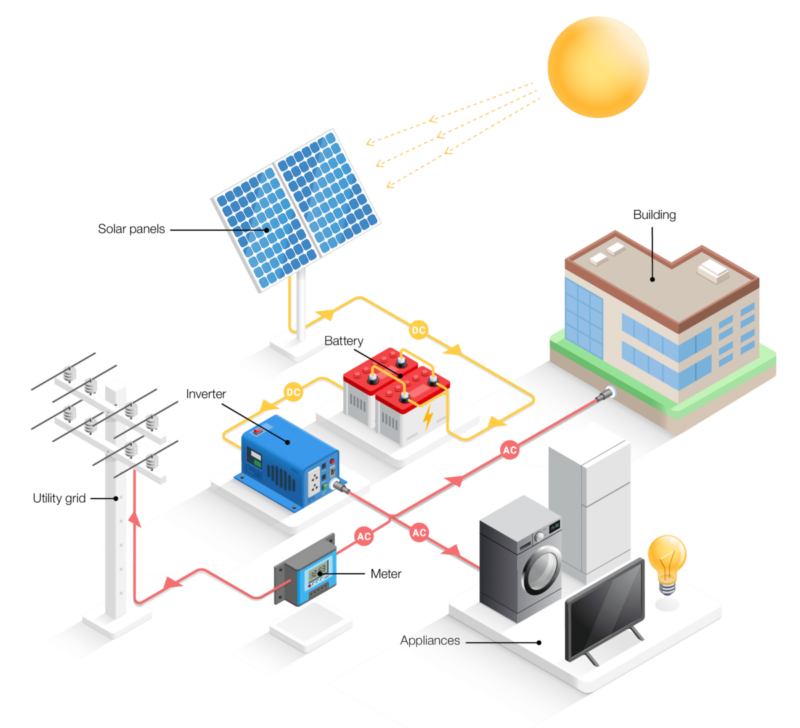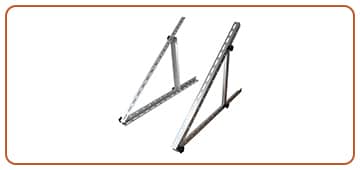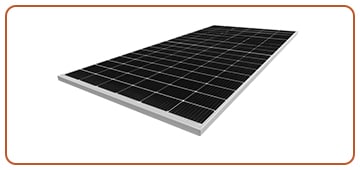

As businesses are looking to become more environmentally friendly and reduce their carbon footprint, we’re going to look at the benefits and basics of using solar photovoltaic (PV) systems as a renewable energy source and how they can benefit your business.
A solar PV system is a sustainable and low-maintenance source of renewable energy that can be installed on the roof or facade of a building or as a stand-alone installation in open ground-level spaces such as fields or car parks. With many businesses adopting solar to proactively contribute to a greener environment, the systems do not cause adverse pollution or carbon emissions, making them a good system to implement.

How does a Solar PV system work?
PV systems use photovoltaic cells to collect solar energy from natural sunlight. PV systems only require daylight rather than direct sunlight to generate electricity, giving you a guaranteed energy source even on a cloudy day.
When sunlight hits the solar panels, photons are converted into electrons. As these electrons pass through the panel’s cells, they’re converted into electricity. The higher the intensity of the sun, the greater the number of photons, and thus the higher the flow of electricity produced.
PV cells produce electricity in the form of a direct current (DC), which is in contrast to the power used by conventional mains electrical equipment, which is an Alternating Current (AC). An inverter is also needed to convert DC electricity to AC for the building’s immediate use.
The PV panels are always on, allowing for electricity to be continuously produced during daylight hours. When the generated electricity exceeds the requirement of your building, batteries can be installed to store energy with any further surplus available to sell back to the power grid.
Typical Solar PV System Components
Photovoltaic Panels
The solar PV panels convert light into direct current (DC) electricity and come in various shapes, sizes and power outputs.
The three main types of solar panels are monocrystalline solar panels made from single crystal silicon cells. Polycrystalline solar panels are made from fragments of silicon crystal that are fused together. Thin-film solar panels are manufactured from layers of semi-conducting materials such as silicon, cadmium telluride and copper indium gallium selenide.
All panels available on the market today will differ in efficiency, so it is important to work with a solar PV partner who can specify the best system for your building and energy requirements.
Inverters
Connected to the PV panels via DC cables, inverters convert DC into alternating current (AC) electricity for use in buildings. Inverters maximise the PV output whilst minimising power losses. Depending on the number of solar PV panels installed or the required kWh generated, the size of the inverter will differ.
Frames and Fixings
Solar PV panels are typically mounted horizontally or vertically on a building’s roof or facade to achieve the optimum energy generation for your building. Various frames and fixings are available to choose from to secure the PV panels to a roof, wall or surface. Most standard solar PV panels are supplied with an aluminium frame, which can be securely attached to prefabricated rails that are mechanically fastened to the existing roof structure.
Benefits of a solar PV system
Powering your building with solar PV systems will positively impact the environment by using fewer fossil fuels and reducing reliance on the National Grid.
Further benefits include:
- Cut your electricity bills
- Reduce your carbon emissions
- Increase your property value
- Fast return on investment
- Payback in as little as 4 years
- Super Tax deduction (available until the end of March 2023)
- Operational leasing available
- Low maintenance
- Quick installation
Solarise system
The Garland UK Solarise system can be installed on any Garland waterproofing system, including bituminous membranes, cold applied liquid coatings, metal roofs and green roofs.
The Solarise system will pay for itself in a short time, effectively producing free energy for a building and creating a significant cost saving for the building owner. Solarise PV systems can offer immediate benefits across all sectors. As electrical tariffs rise, these rates of returns will increase, and businesses will likely see themselves paying off the initial cost of installing Solarise around in as little as 4 years.



Solarise and Your Business
Your local Garland UK Technical Manager will carry out a free site survey to assess your roof condition and Solar PV Yield Analysis, which will provide a detailed assessment of
- Expert advice on selecting the most suitable system for your business
- Guidance on how much power your site needs
- Annual carbon emissions that can be negated
- Clear return on investment and financial analysis
- Support with Super-Deduction Tax or Financing options
Our Technical Managers are always on hand to help you with any questions or problems that you may have and will take the lead in project managing the actual installation. We partner with a national network of approved, highly trained contractors with a wealth of experience in PV installations.
To discuss your solar project with a roofing expert, speak to a Technical manager today for a free site survey and solar yield analysis of your building.
